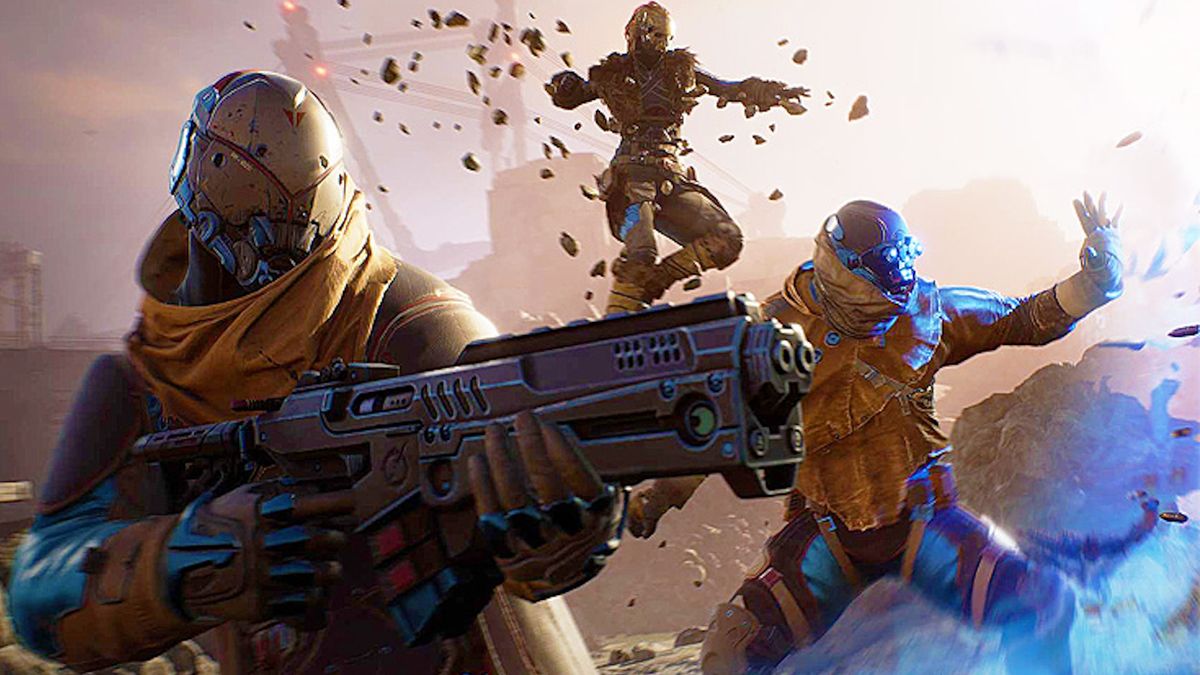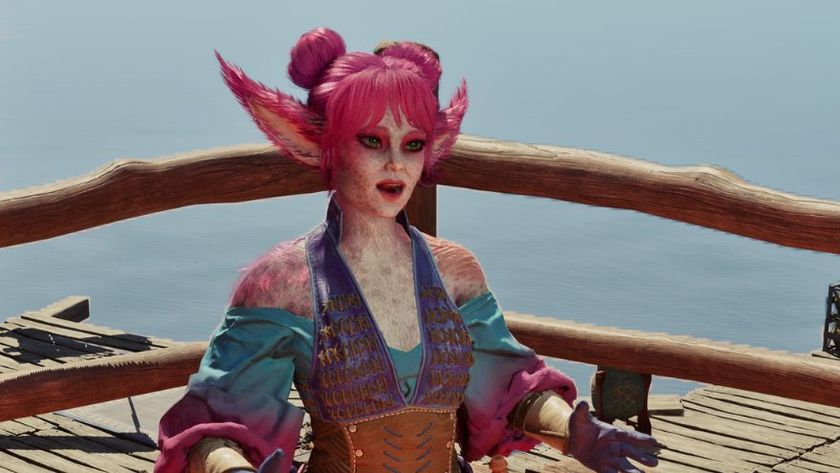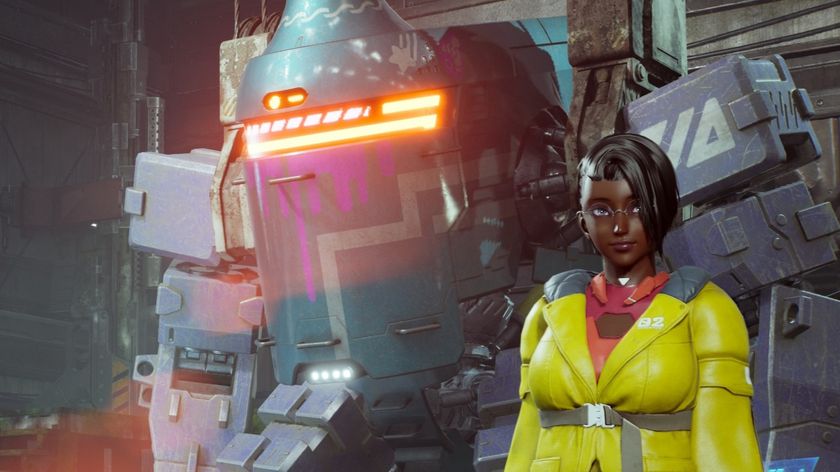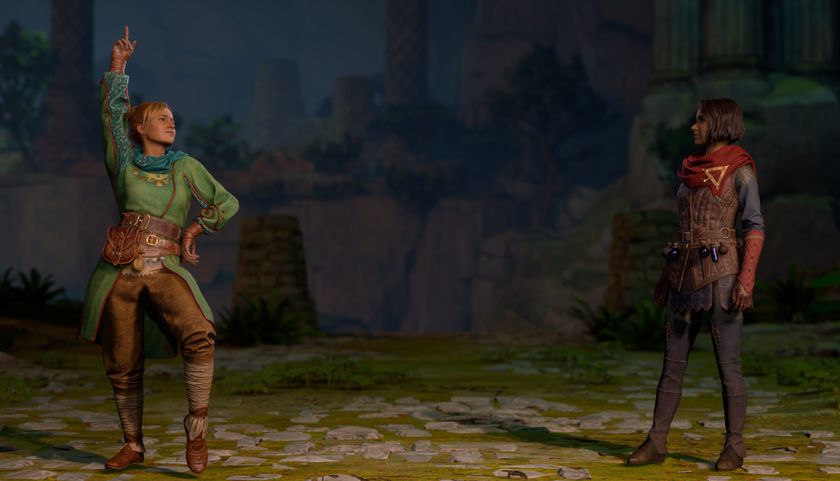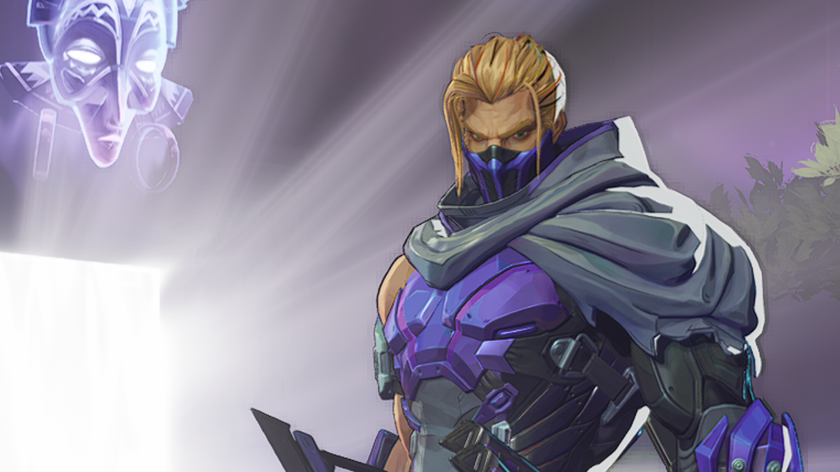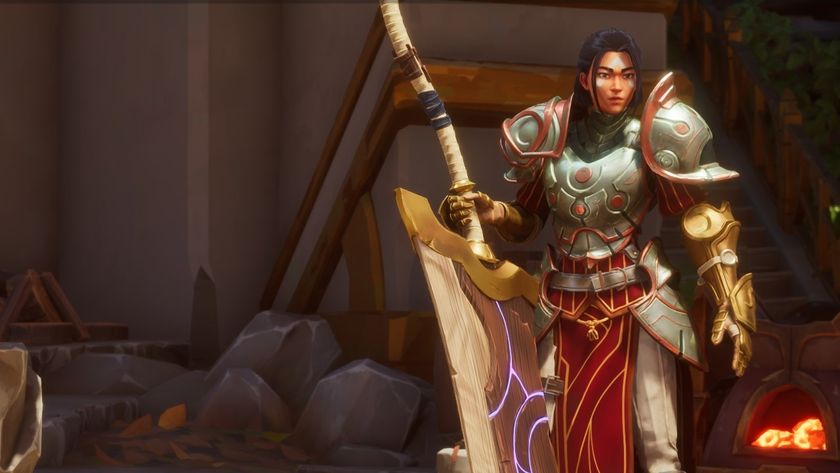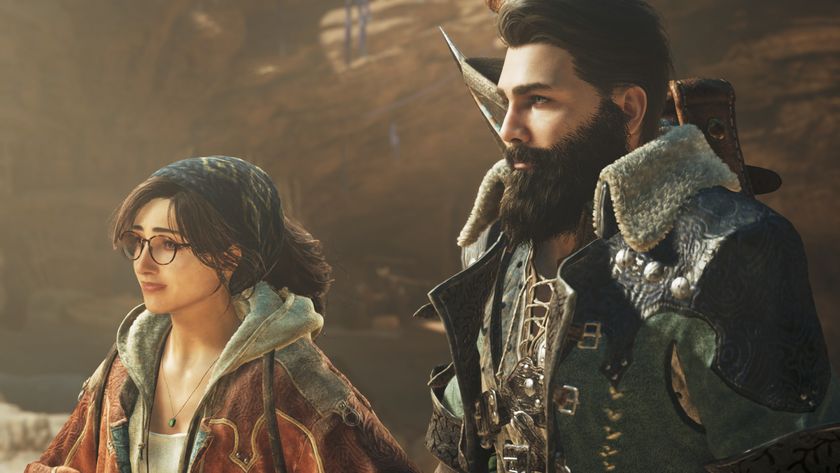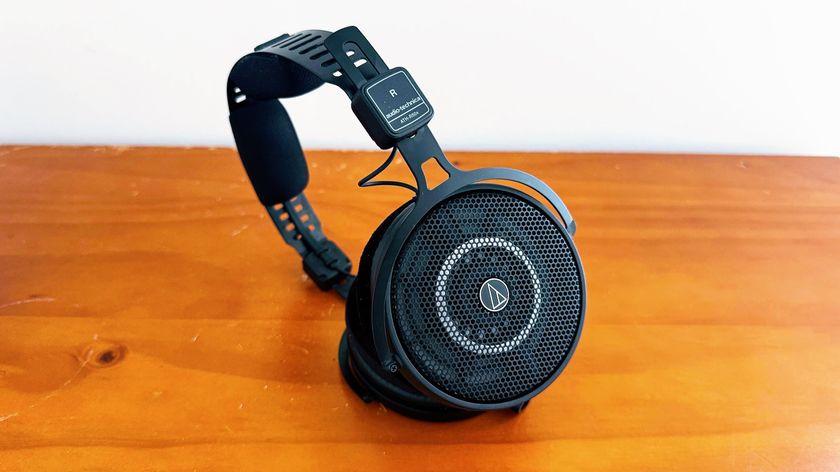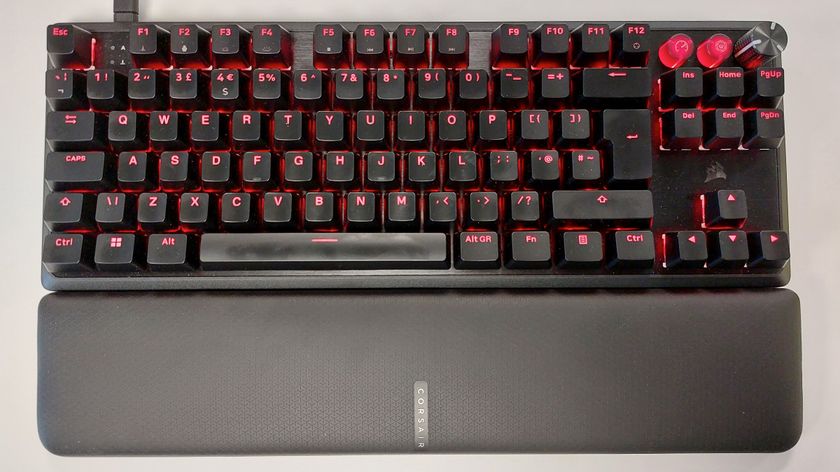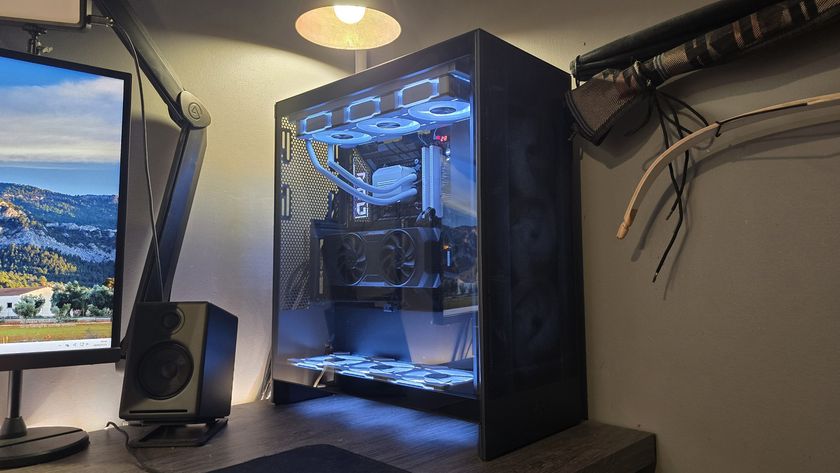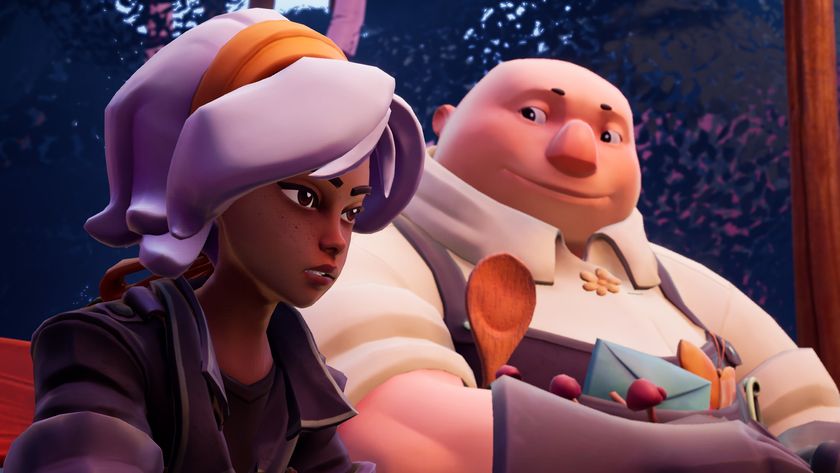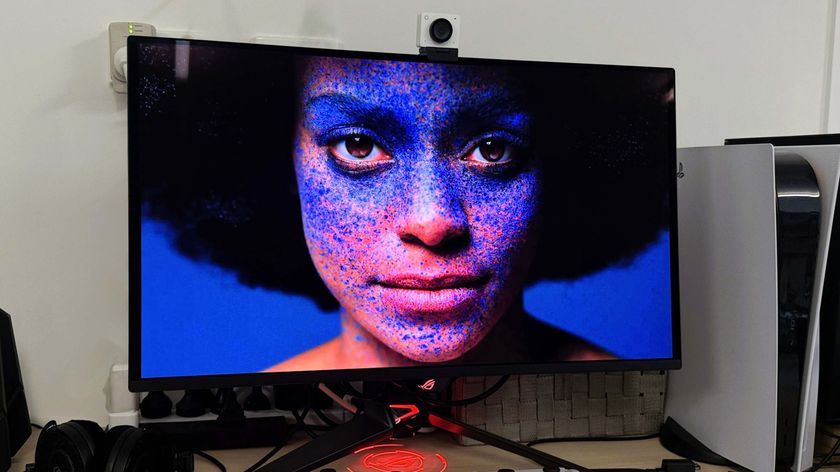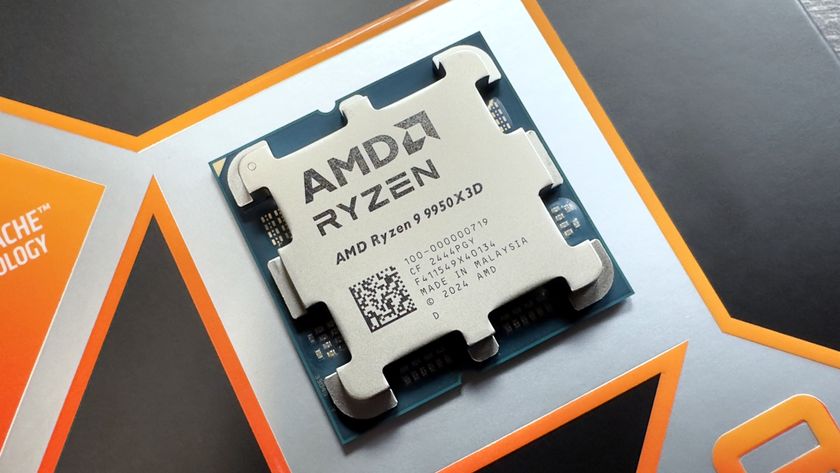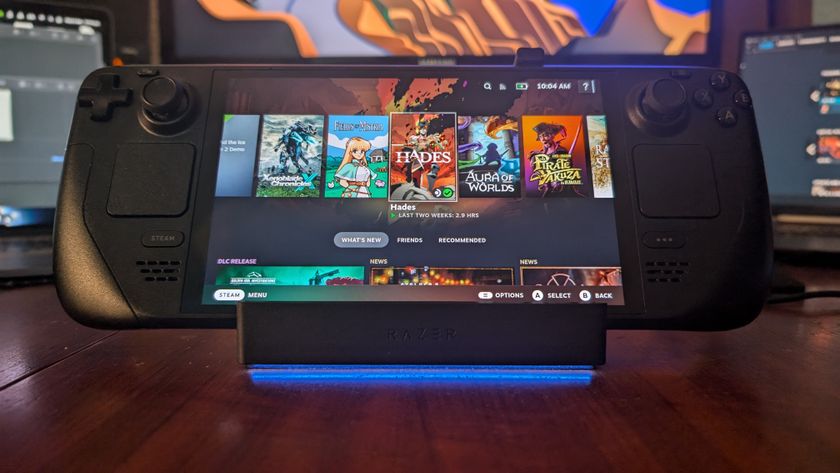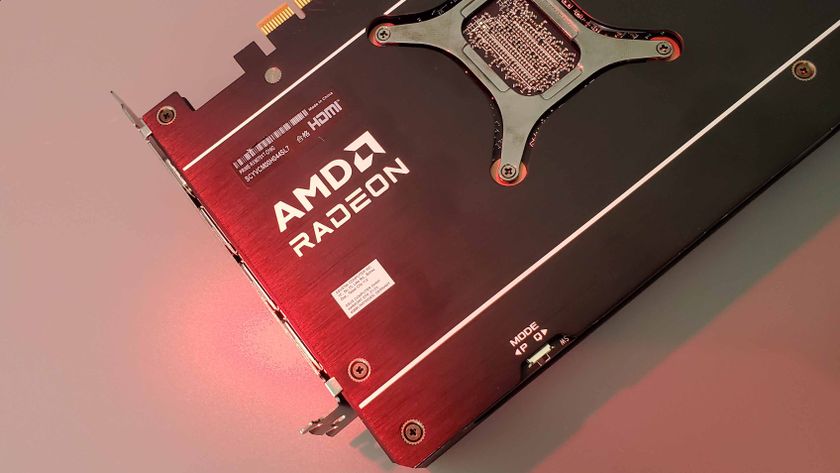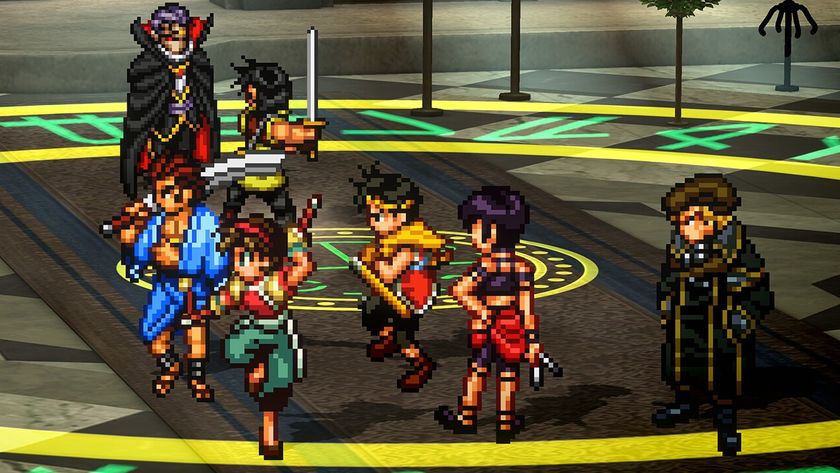Our Verdict
Buried by an unsatisfying combat loop and bad campaign, Outriders is a forgettable loot game that ends right as it's getting started.
PC Gamer's got your back
What is it? A third-person co-op looter shooter
Expect to pay $60
Developer People Can Fly
Publisher Square Enix
Reviewed on RTX 2060, Ryzen 5 2600 3.4GHz, 16GB RAM
Multiplayer? Co-op up to 3 players
Out April 1
Link outriders.square-enix-games.com
When I think of People Can Fly, I think of Bulletstorm, an absurdist FPS remembered a decade later for its outrageous weapons, like the crazy-ass drill gun that could be steered mid-air and penetrate multiple enemies. By the end of that game, launching bodies 20 feet in the air and energy-whipping them into an explosive barrel was one of the most mundane ways to solve a problem.
It's almost hard to believe that Outriders shipped with the same studio logo on the box, because it looks like the bland shooter that Bulletstorm's meathead characters would make fun of. It's a surprisingly shallow looter shooter that tries very hard to look like Destiny and play like Gears of War. But honestly, I'd rather replay any of the games I've already mentioned than spend more time on Enoch.
In my first 13 hours with Outriders, I said that I was still waiting for it to impress me as I completed the campaign and looked toward the endgame "Expeditions" mode. My opinion has brightened a bit: Expeditions do represent the best that the game has to offer, but they're not compelling enough to fuel a habit.
I have larger problems with the core fundamentals underlying the game. Outriders' shooting mechanics, loot, level design, and matchmaking aren't very good. The sum is a mediocre b-movie looter lookalike that can be safely skipped. But yes, if a competent looter scratches the right itch for you in a year proving to be somewhat of a dry spell, then Outriders might sound like a gift from the loot gods.
That is, when it works. The first few days of Outriders launch were plagued with server issues that locked people out of playing the game at all, even though the entire game can be played singleplayer. I spent most of Saturday trying and failing to play for more than a few minutes at a time before getting punted back to the main menu, but Sunday was more stable. I see no reason to think conditions won't improve in the future, but that doesn't excuse a central flaw: when you're playing singleplayer, it requires a constant internet connection. I really hope that developer People Can Fly patches in some sort of offline mode in the future, if not to mitigate server troubles, then to at least let solo players pause the damn game (without Nvidia Ansel, preferably).
Rolling the perfect combination of perks on your favorite Destiny guns could take hours, but it's just a few clicks in Outriders.
As a shooter fan first and a loot fan second with days worth of time in Destiny and Borderlands, I think People Can Fly and I have opposing priorities in our loot shooters—everywhere I would zig, Outriders zags. Nothing illustrates this better than Outriders' extensive class skill trees for the four classes that mostly consist of tiny, incremental stat boosts (plus 5 percent close-range damage here or plus 8 percent clip size there). Cool, I guess. The incremental upgrades aren't transformative, but rather subtle nudges toward certain playstyles, like my Trickster's eventual affinity for shotguns. I can see the numbers get higher and trust that an extra 10 percent damage against the stronger Captain enemies is helping, but the result doesn't meaningfully change how I play the game.
The same goes for Outriders' weapons, which span a mostly predictable variety of assault rifles, shotguns, DMRs, sniper rifles, and LMGs. I spent almost the entire campaign cycling through nearly identical variants of the same two or three shotguns and rifles, trashing the old one each time a bigger number came along.
It wasn't until the back half of the campaign that I finally started finding enough Rare weapons to take advantage of Outriders' generous mod system. This is the one area where People Can Fly unshackles players to theory-craft optimized builds to their heart's content. Dismantling any armor or gun for materials automatically banks its mods so that they can be later applied to any other gear you've got for a minor crafting fee. As far as I can tell this applies to literally any gun, even the powerful tier three mods found on Legendary gear, so you eventually end up with an extensive vault of modular bonuses like extra piercing damage or shield regen.
It's a fairly radical departure from the grindy crafting systems the genre is known for. Rolling the perfect combination of perks on your favorite Destiny guns could take hours, but it's just a few clicks in Outriders.
Mod shop
I just wish it didn't take so long to get to that point. The majority of Outriders is its campaign, and I wasn't starting to have fun with weapon mods until it was almost over. Once you beat the pushover of a final boss, all that's left to do is clean up uninteresting side quests and grind in the post-game Expeditions mode, which is little more than a neverending testing ground for builds. The flexibility of Outriders' mods stands out as its most innovative features, but it has the side effect of sucking any personality out of the gear itself. It hardly matters what random properties my latest shotguns rolled because I'm probably going to use it as a hollow husk to bolt on the mods I already decided were my favorites hours ago.
That's exactly what happened with the first Legendary I scored, the Thunderbird, a gnarly-looking assault rifle carved from alien bones. Its tier three Ultimate Storm Whip mod is a nasty damage bonus that calls a thunderbolt down from the sky with each connected shot like Thor himself commissioned it. The Thunderbird instantly became my favorite gun after the pile of common drops that preceded it. It had a clear identity. I was bummed when its firepower was quickly outpaced by common drops after a few hours, but I eventually dismantled it so I could make use of its mods.
Naturally, I slotted the Storm Whip perk into my newest rifle, but something was lost in translation. Barbecuing alien dogs just aint the same when it's coming out of a dull steel rectangle. Even though Outriders is designed around this freeform hot swapping, for me, it dilutes the feeling of finding something truly unique and powerful. Not only that, but the malleability of the best mods retroactively makes the rare loot that they originate from less cool. Sorry, Thunderbird, you're not as special as I thought. I've got 80 Mjollnir guns now.
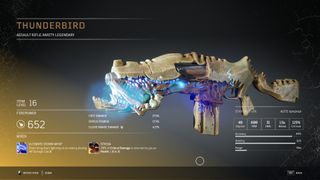
Fight, no flight
Man, I love looking at Outriders' legendary weapons, though. I keep going out of my way to admire them further in a completely unnecessary examination view just to bask in the fantastically detailed models. Eventually I realized that I only keep doing this because I can barely see my dang guns.
I like third-person shooters just fine, but Outriders doesn't use the perspective to its advantage.
A loot shooter where you can barely see your coolest guns seems counter-intuitive. The camera follows the center of the screen, so I can't pan around to admire my Outrider in action. The back of his chunky armor clogs up the screen at all times while I can barely make out the back-right flank of my gun barrel. This is nothing new. First-person loot games empower intimate connections with the rare guns that motivate players to trudge on. In Borderlands or Destiny 2, equipping a new gun is almost like playing a different character—a new face on the screen with its own behaviors and quirks. My Outrider's decidedly unathletic moveset doesn't quite stack up.
Seriously though, for a game about cutting loose with godlike powers, I have no idea why Outriders is so horizontal. Every arena is an uneventful grid of waist-high cover straight out of Xbox 360-era Gears of War (a series People Can Fly worked on extensively), right down to the way that every player character is firmly glued to the ground. A nice floaty jump would pair perfectly with my Trickster's teleportation build or the Pyromancer's fireballs.
Outriders' baffling pacing problem doesn't help either. Besides a few genuinely exciting set piece boss fights, every single level is a sprint from one cordoned-off arena to the next with the occasional exposition over radio between—which is a shame, because the environments that fill the skybox outside of the playable zones are breathtaking on a regular basis.
I kept smashing my screenshot key every time a gigantic dilapidated city, endless desert, or 300-foot-tall rock alien emblazoned the horizon. The impressive scale of the world around makes combat zones feel like cardboard dioramas. I can't tell you how many times I've had to "Hold E To Clear The Way" on a pile of rubble or door that wouldn't open until everything in the room was dead. It's a pattern that doesn't let up for 12 hours.
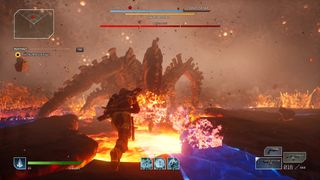
Power trip
There's also a huge focus on class-specific magical abilities. I mained a Trickster that can only regain health and shields by killing baddies up close. The main damaging skill you start with, the Temporal Blade (which is more of a shockwave that zaps targets down to their skeleton before eventually exploding), served me better than the one or two other offensive skills unlocked over time, so I just stuck with it throughout.
That's fine by me. I never got tired of making a bad guy's insides become his outsides, but I was eventually irked by how clunky the powers feel. The combat loop is similar to Doom 2016's shoot/glory/kill chainsaw rhythm, but my Outrider is lethargic compared to the graceful Doomguy. Outriders' abilities usually take an extra beat to wind up and usually freeze you in place while it does so. The cover system is a constant source of frustration, too. I usually had to smash the spacebar two or three times before my Outrider listened, all while getting shot in the face. Even playing the most maneuverable class of the bunch, movement isn't one of the game's strengths.
I usually had to smash the spacebar two or three times before my Outrider listened, all while getting shot in the face.
The AI never lets up or loses sight of you. If you've got skin exposed, it's getting pelted by bullets. Fights are a bit easier on my Technomancer character that regains health every time I deal any damage, but the Trickster relies on finishing off fodder to stay standing—a bit trickier once Outriders' spongier Captain baddies start to outnumber their minions. Scalable difficulty tiers come in handy here. Difficulty can be swapped at any time on the pause menu. A lower tier means worse chances for good loot. Tiers scale all the way up to level 15, but I spent most of my time bouncing between Tiers 3 to 5, which the game considers normal to hard.
Co-op definitely seems like the way to go. Every fight felt immediately more balanced with one or two teammates by my side to share the aggro—even better when one of them is the support-focused Technomancer with an area-of-effect heal. I just wish matching up with other players wasn't so bad if you don't have friends to play with. There's currently no way to matchmake into a specific expedition, so the best you can do as a solo operator is join a rando's session and hope they want to play the one you do. You could also wait for someone to join you, but that didn't happen a single time to me despite keeping my party open.
Good luck talking to them once they finally do join, though. There's no native voice or text chat and People Can Fly isn't planning on ever adding it.
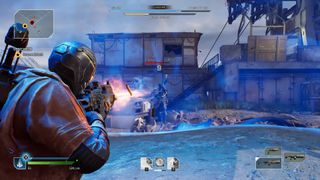
Outliers
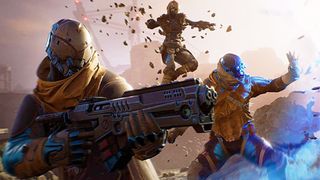
Outriders classes: Which path to choose
Outriders Trickster: Powerful early setups.
Outriders Pyromancer: Fiery starter skills.
Outriders Devastator: Top tank setups
Outriders Technomancer: Support your squad
People Can Fly has been very clear prior to release that Outriders isn't a service game—there is no roadmap or set schedule for future expansions. What's already here is what the game is. If I hadn't known that going in I would been pretty surprised as I rolled credits on the campaign, because the entire thing feels so insignificant. The story follows your player, one of the last Outriders (elite soldiers, basically), on a roadtrip across humanity's new home planet Enoch to call down resources from a long-abandoned colony ship. Early on your Outrider becomes Altered, which is basically like having elemental Light powers from Destiny, but with a different proper noun. I could go on, but other than a few fun cutscenes half-ruined by audio bugs, it's a dull tale that seems to have little other purpose than setting up an endgame.
And then, the endgame happens, and it's surprisingly bare. I spent the better part of my weekend wrapping my head around Outriders' Expeditions, a rotating pool of ~15 challenging missions that can get a lot harder as you unlock over a dozen difficulty tiers through repetition. The quality of loot rewards scales up and down depending on how fast you get them done, but if the squad is wiped even once, you have to start over.
It's a neat little mode that I could lose a few hours to with friends, similar to the hardest runs of Mass Effect 3's surprisingly fun multiplayer mode. That's the only way I'd recommend playing Expeditions unless you've optimized a loadout around self-heals. That said, the only real progression is the drive to unlock even harder versions of the same missions. I'm not passionate enough about Outriders' spongey combat to go much further.
I guess that means I'm pretty much done with Outriders. There's something here for folks that go bananas for the most granular of class customization—all those incremental class boosts are probably a dream to my most min-maxing of friends. It'd be easier to get excited about that stuff if Outriders' basics were as good as what else is out there. Game Pass feels like the perfect home for a divisive game like this that rubs players the wrong or right way depending on what you're looking for. It's a shame that PC Game Pass subscribers aren't getting the same deal, but I think Outriders is a safe skip either way.
Buried by an unsatisfying combat loop and bad campaign, Outriders is a forgettable loot game that ends right as it's getting started.

Morgan has been writing for PC Gamer since 2018, first as a freelancer and currently as a staff writer. He has also appeared on Polygon, Kotaku, Fanbyte, and PCGamesN. Before freelancing, he spent most of high school and all of college writing at small gaming sites that didn't pay him. He's very happy to have a real job now. Morgan is a beat writer following the latest and greatest shooters and the communities that play them. He also writes general news, reviews, features, the occasional guide, and bad jokes in Slack. Twist his arm, and he'll even write about a boring strategy game. Please don't, though.
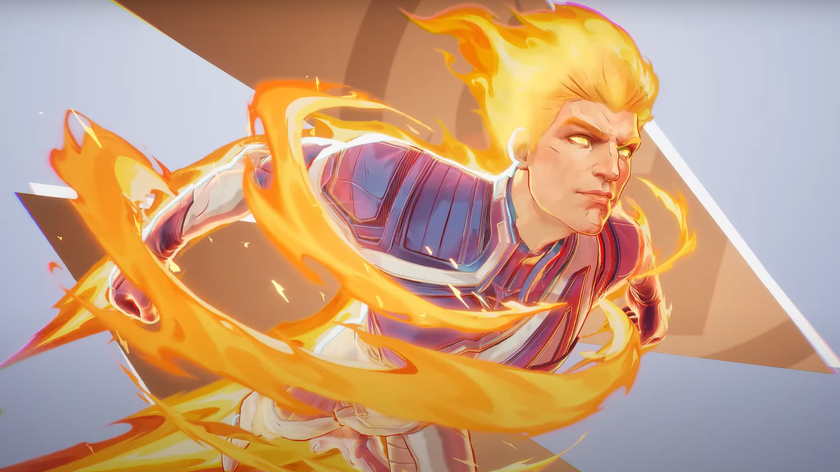
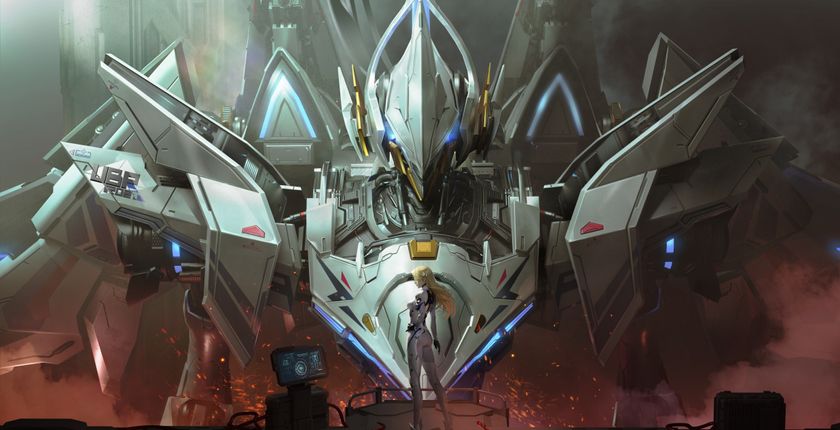
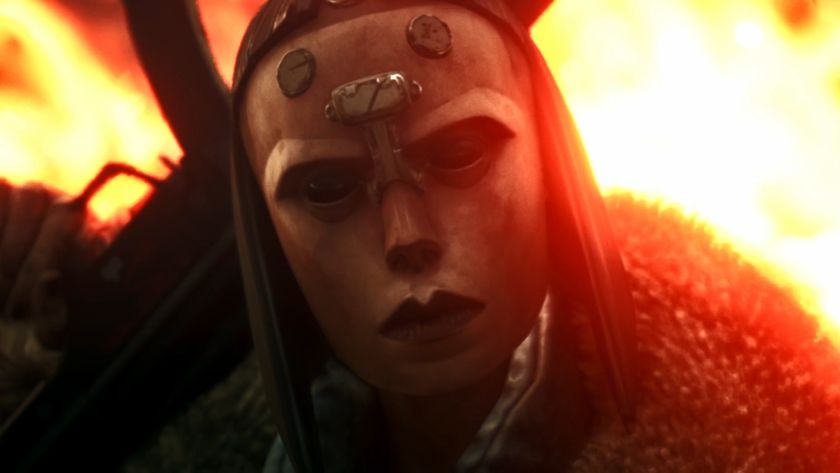
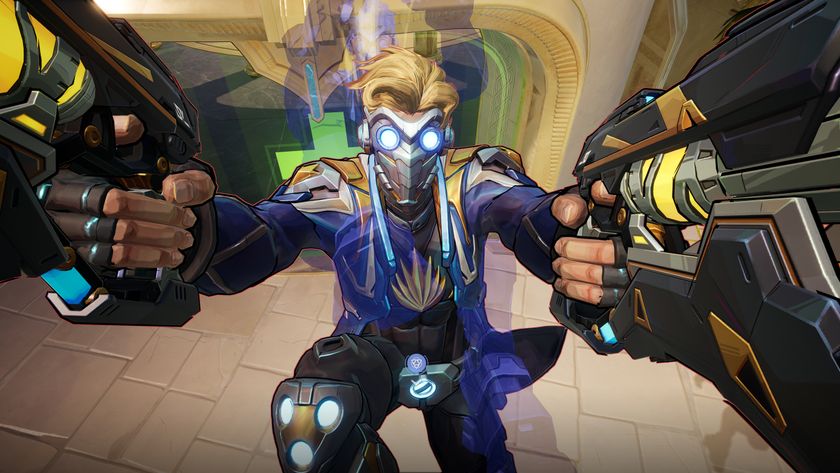
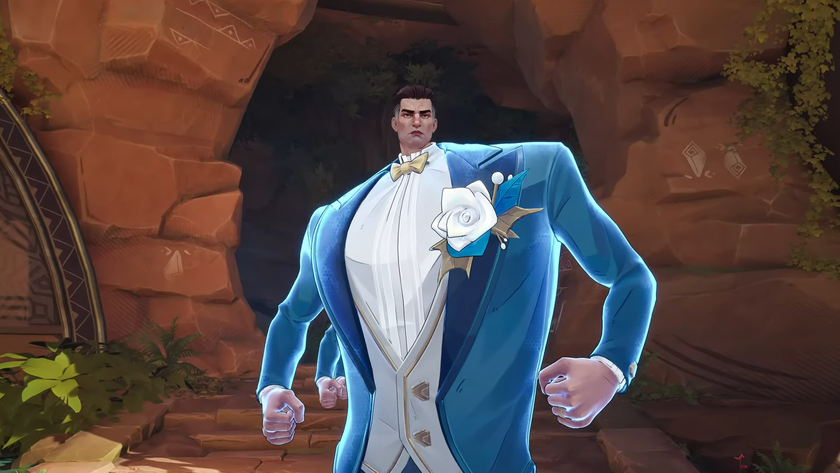

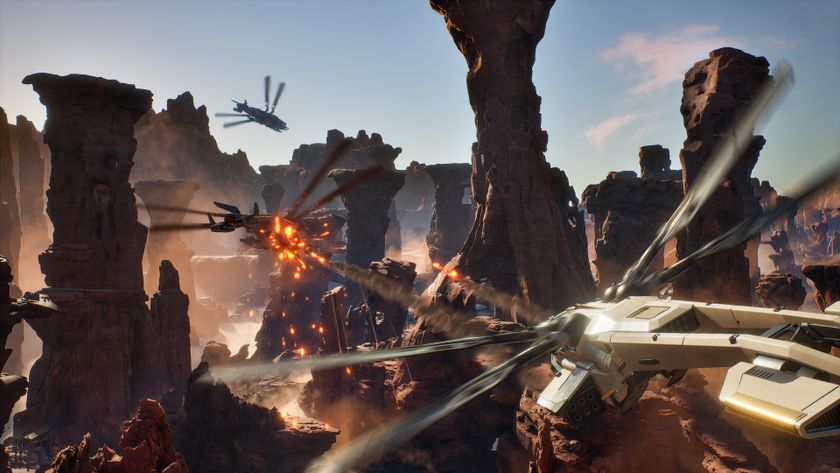
Dune: Awakening confirms air-to-air combat in ornithopters

LocalThunk forbids AI-generated art on the Balatro subreddit: 'I think it does real harm to artists of all kinds'
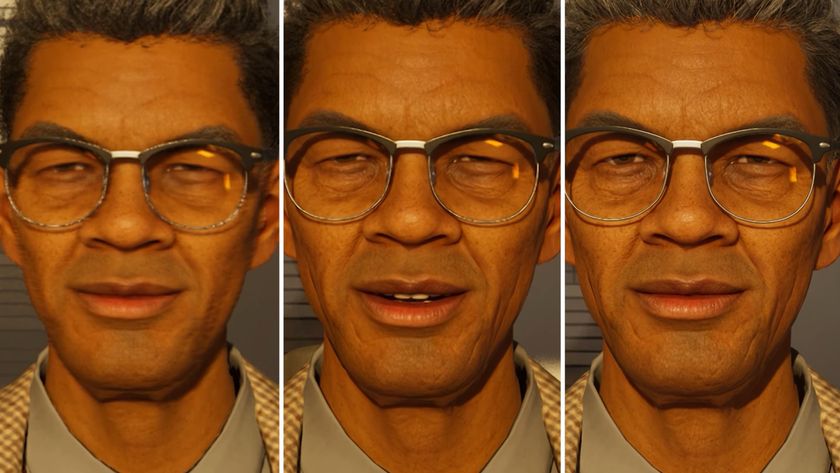
Oh great, the full Inzoi system requirements are posted and I'm barely above the minimum specs so I guess my Zois will be beautifully blurry
